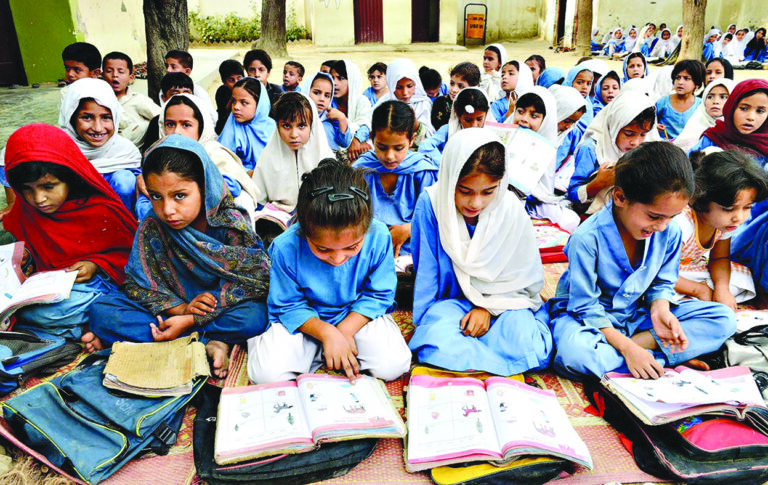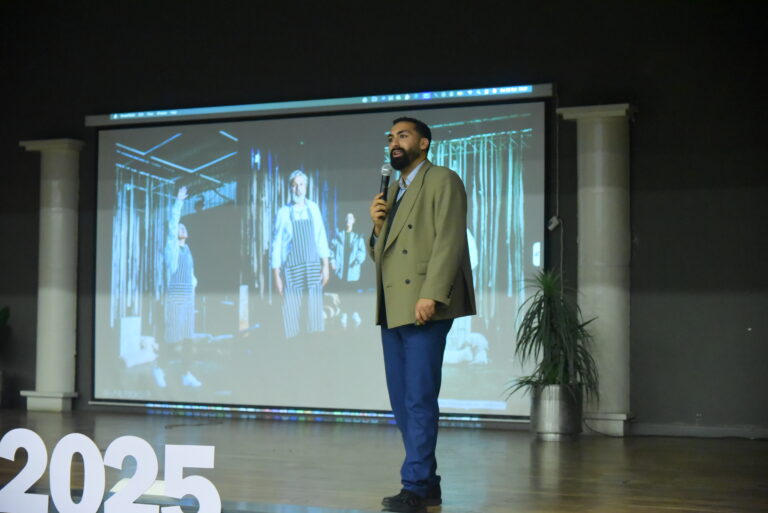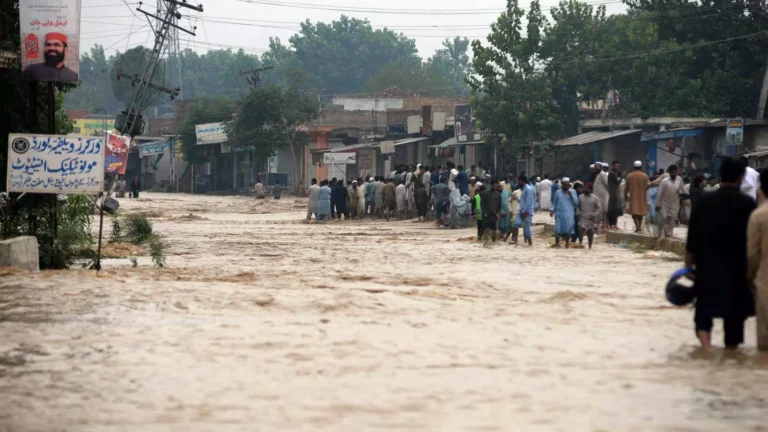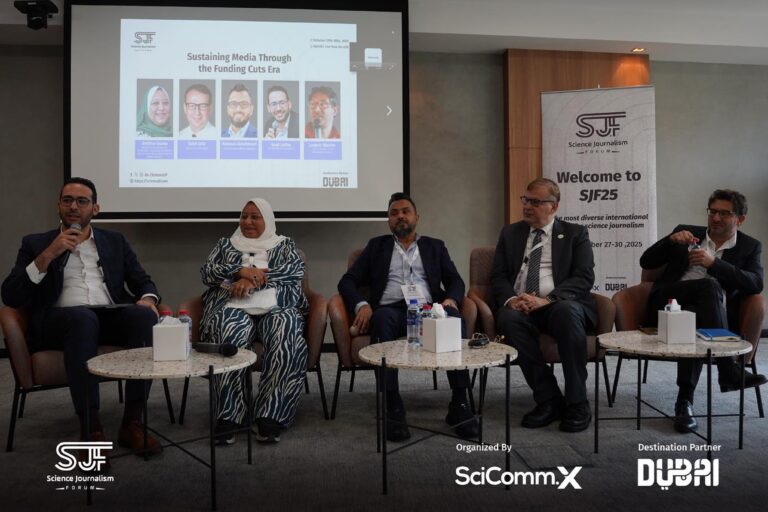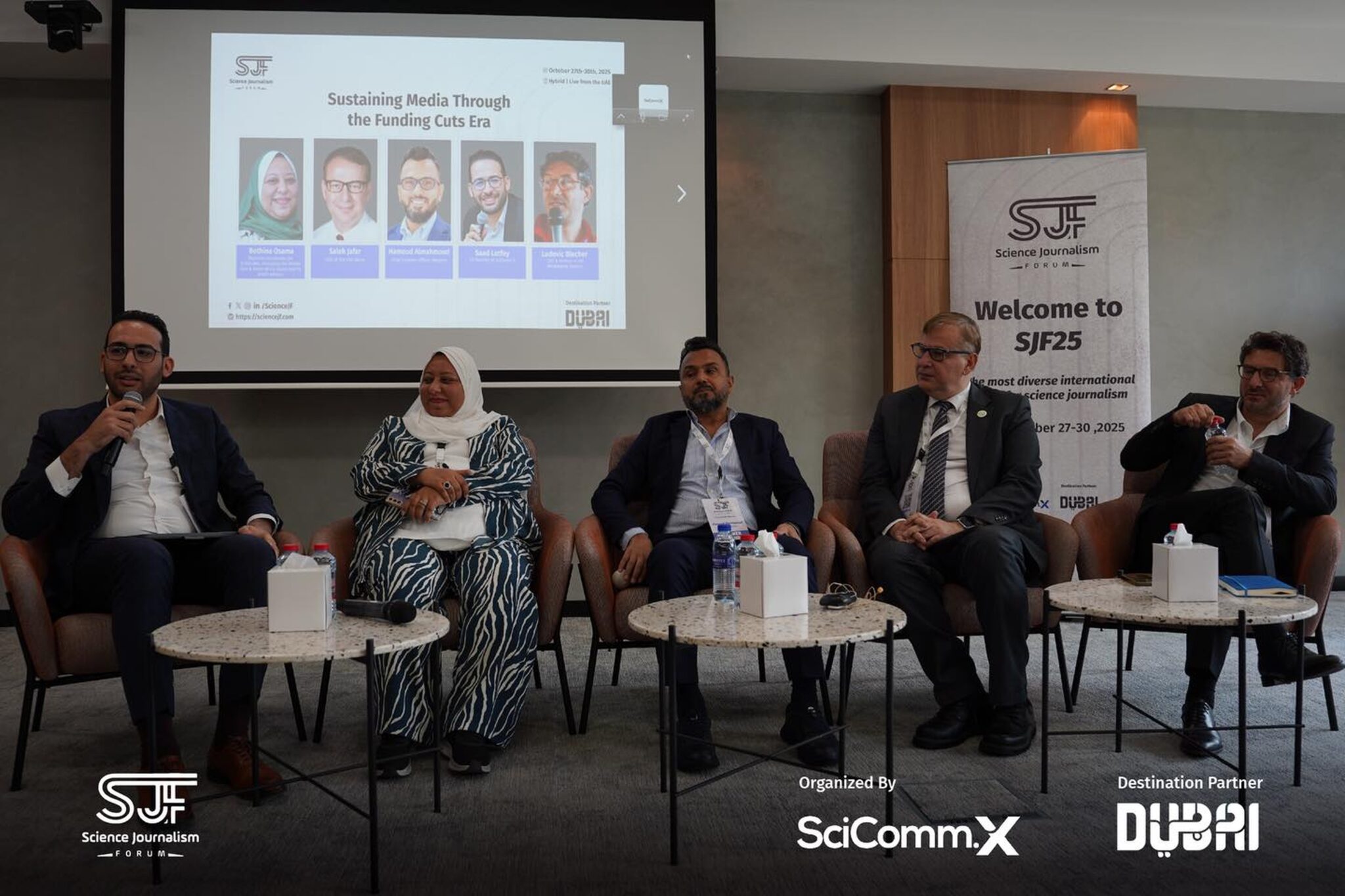It is widely acknowledged that in the twenty-first-century global information economy, STEM education is a vital component of innovation, economic growth, and sustainable development. Strong STEM skills throughout the populace enable nations to tackle difficult issues like public health emergencies and climate change, while also promoting competitive sectors and high-value job opportunities.[2]
“For women and young girls, they’re expected to be a housewife, to mother a child, to take care of the husband and be in the kitchen,” said Rida Abbas, a second-year business economics and political science student from Pakistan. “People should have access to choose what’s right for them, and that’s not really a choice in Pakistan for many women.”[1]
When it comes to gender inequality in STEM education, Pakistan offers a compelling case study. Despite slight improvements in general educational attainment over the past few decades, Pakistani women and girls still face significant obstacles to involvement in and success in STEM disciplines.
These discrepancies seriously limit Pakistan’s capacity for social and economic advancement, in addition to being a violation of educational equity. Although the type and degree of gender inequality in STEM education differ significantly between nations and regions, it is a worldwide phenomenon. Despite international efforts to highlight the importance of STEM for economic growth, patriarchal systems and underfunded institutions continue to impede Pakistan’s advancement.
STEM education is a cornerstone of socioeconomic development, enabling nations to address challenges such as climate change, public health crises, and technological innovation. So, what does it predict for the future of our country when the full potential of its intellectual capacity is not being implemented? Pakistan stands to lose an estimated PKR 500 billion annually, while closing this gap could boost the country’s GDP by $30 billion.[3]
Therefore, it’s not only a question of social fairness and fundamental rights since everyone, regardless of gender, should have an equal chance to explore their abilities and follow their academic and professional goals, but also about boosting women’s involvement in STEM subjects to improve Pakistan’s competitiveness in a global economy that is becoming more and more reliant on technology while also addressing the country’s severe talent shortage, presenting more inclusive and creative answers to Pakistan’s development problems.
Current State of Gender Representation in Pakistan’s STEM Education
The World Economic Forum ranks Pakistan, the sixth most populous country on earth, as the least gender equitable in the Asia and Pacific region, reporting significant gaps in enrolment across education levels – Pakistan ranks at 145 positions out of 146 with a gender gap index of 0.057, which has decreased by -3 points from last year. The educational attainment index is 0.836, ranking 139 out of 146 in 2024.[6]
Women comprise less than 10% of professionals in these fields. This disparity stems from entrenched cultural norms, systemic inequities in education, and economic barriers that disproportionately exclude girls and women.[7]

Statistics from UNESCO indicate that women’s university enrolment in Pakistan in the natural sciences fields rose from 20% to 31% between 2017 and 2020, indicating a good trend. But over the same time span, engagement in agriculture has dropped from 2% to 0% and in Information and Communication Technology (ICT) from 9% to 6%, suggesting regression in vital STEM fields.
The gender gap becomes more pronounced in rural regions, where just 28% of high school pupils are female. While women make up over 46% of students in the humanities at the postsecondary level, they are still underrepresented in STEM professions, especially in engineering by 21% and agricultural sciences by 12%. The differences are even more pronounced within the workforce, where women only make up 4.9% of engineers and 3% of those working in the power transmission industry.
Systemic Barriers in Education Systems for Women
The barriers that prevent women from pursuing STEM education in Pakistan are not isolated; rather, they intersect in intricate ways that further disfavour particular groups. A complex network of institutional, societal, and economic elements influences educational possibilities and experiences differently for diverse groups of women.
A Patriarchal Society and Taboos
Pakistani society is rife with patriarchal beliefs and gender norms, with men holding a firm grasp over almost every aspect of life, influencing what women should learn and do for a living. Women are largely discouraged from pursuing an education by their reigning male family heads, the values of mindless docility and submission being forced onto them since birth.
Even if they do, they are guided more towards humanities, education, or healthcare fields, perceived as continuations of traditional caregiving roles, with STEM being perceived as largely ‘unfit’ for women. Even if the family is willing to give support, the fear of disregarding societal expectations takes precedence in the end.
Moreover, girls and women bear a disproportionate amount of the responsibility for household duties, which results in severe time constraints that impede their ability to pursue their academic goals. Even while they are studying, female students are sometimes expected to contribute significantly to household chores, which limits their time for academic pursuits, particularly the rigorous laboratory work or programming practice that STEM topics frequently call for.
With 54 percent of girls getting married and/or pregnant before turning 18 (regional variations apply), early marriage continues to be a major obstacle to girls’ educational progress. Marriage sometimes results in the cessation of study, especially in STEM disciplines that demand sustained, long-term dedication.
Marriage frequently occurs during significant educational turning points, such as the transfer from high school to college, which disrupts female students’ STEM career paths. And many women are forced to give up their education post-marriage altogether, as their spouses grow increasingly possessive and sceptical of the independence that it may grant them.
For example, the Pakistan Medical and Dental Council (PMDC) has indicated that 50% of female medical graduates never work following their studies. While 70% of medical students are women, only 23% of registered doctors are women. [5]
In coeducational environments, religious and cultural customs such as gender segregation and prohibitions on gender mixing erect further obstacles. These behaviours may restrict women’s participation in field trips, lab work, classroom debates, and other collaborative learning opportunities that are crucial to STEM education.

Safety and Mobility Concerns
Long commutes to school and dangerous or insufficient modes of transit create obstacles that disproportionately affect female pupils. Women’s educational options are essentially limited to local schools that might not provide high-quality STEM programs because families are sometimes unwilling to let them travel great distances alone.
While social criticism restricts women’s mobility in metropolitan areas, discouraging enrolment in STEM programs, girls in rural areas confront physical risks when trying to get to school.
These accessibility problems are exacerbated by safety concerns, since parents commonly limit their daughters’ educational opportunities out of fear of gender-based abuse or harassment, particularly inflamed by extremist groups who perceive female education as a threat to ‘religious’ values.
Families frequently decide to restrict girls’ educational opportunities due to the risk assessment created by the lack of safe campus environments, secure transportation, and sufficient protection measures, especially in STEM fields that may necessitate long hours in labs or computer centres.
Resource Gaps
Infrastructure for education is usually insufficient, and facilities reserved for women are either poor or non-existent, especially in more rural regions. The lab apparatus, technological resources, and specialised instructional materials required for high-quality STEM education are in low supply in many colleges and institutions.
Because they might have fewer options for accessing these materials outside of the classroom due to the various systemic barriers, female students are disproportionately impacted by these inadequacies. Government schools lack STEM resources, such as labs and qualified teachers, especially in remote locations.
With subpar science education and inadequate facilities for menstrual hygiene, girls’ schools bear a disproportionate amount of the burden, which results in high dropout rates. Elite private schools, which are frequently taught in English, on the other hand, have better STEM resources but are still out of reach for low-income families.
Curriculum and Pedagogy
In addition to the fact that STEM programs in Pakistan are frequently Western-centric, ignoring indigenous knowledge and neglecting to contextualise applications for rural communities, the “chilly climate” theory- which describes how classroom settings alienate female students through unconscious biases like teachers giving preference to boys in technical discussions- also applies to education.
Systematic prejudice in educational institutions themselves adds to the obstacles, with teachers and administration holding gender biases, evident in the way they treat female students differently, the low standards they have for their success in STEM courses, and the lack of support they receive to pursue careers in these sectors. These institutional prejudices can have a major effect on women’s self-efficacy, perseverance, and success in STEM fields.
Workplace Discrimination
The idea that STEM subjects are unsuitable for women is maintained by a lack of female educators and role models in these fields. In the absence of prominent female STEM role models, female students are less likely to imagine themselves following in their footsteps.z
Gender inequities are perpetuated over generations by this self-reinforcing cycle of the representation gap. When women pursue jobs in STEM, they face discriminatory conditions such as harassment, limited leadership opportunities, and pay disparities. Systemic exclusion is seen in the fact that women only hold 4.9% of engineering supervisory positions.
Socioeconomic Factors
Poverty intensifies gender gaps. Boys’ education is frequently given priority by low-income families, particularly in rural regions, who see it as a safer investment, based on the presumption that boys will become the primary breadwinners and girls’ principal roles will be focused on being a ‘good wife and mother’. Girls are often pulled out of school to help out around the house. Financial limitations restrict access to advanced STEM resources, such as computers or exam fees, even for those who persevere.
Research indicates that girls from low-income families are 52% less likely to attend school than their affluent counterparts, demonstrating the substantial impact poverty has on educational access and persistence. Since 88% of adolescent girls aged 11-17 live in poverty, many families are forced to make tough choices about their children’s education, frequently giving boys’ education priority when funds are tight.[10]
For many families, the immediate costs of education, such as tuition, supplies, transportation, and technology, create significant financial obstacles, especially in STEM disciplines that require a lot of resources.
With women comprising less than 10 percent of STEM professionals despite representing half the population, Pakistan is operating at a fraction of its intellectual and economic potential. Where so much talent remains unrealised due to an unreasonable gender bias, can we truly claim to value the talents and dreams of all our citizens?
Yet acknowledgment of the flaw alone changes nothing. The question now becomes: what will Pakistan do with this understanding? How will policymakers, educators, families, and communities transform these insights into action? The path forward requires not just awareness but concrete strategies, sustained commitment, and systemic reform.
References:
- M. Gill, “Opinion: Gender equality in education is needed for girls in Pakistan to pursue dreams,” January 2024. [Online]. Available: https://dailybruin.com/2024/01/21/opinion-gender-equality-in-education-is-needed-for-girls-in-pakistan-to-pursue-dreams.
- UNESCO, “Advocacy Brief: Support girls and women to pursue STEM subjects and careers,” UNESCO, 2024.
- A. S. Malik, “Empowering the future of Pakistan: Gender Strategy Pakistan 2024-2027,” UNICEF, 2024.
- E. S. Qadri, “The Brilliant Pakistani Women in STEM,” 2019. [Online]. Available: https://scientiamag.org/the-brilliant-pakistani-women-in-stem/.
- M. R. C. S. S. HOLLOWS, “Understanding female participation in STEM subjects in Pakistan,” British Council.
- World Economic Forum, “Global Gender Gap 2024- Insight Report,” World Economic Forum, 2024.
- M. Ahsan, “Less than 10% women in STEM in Pakistan: gender stereotypes or choice?” 2022. [Online]. Available: https://voicepk.net/2022/05/less-than-10-women-in-stem-in-pakistan-gender-stereotypes-or-choice/.
- A. Fleck, “Best and Worst Countries for Gender Equality,” 2024. [Online]. Available: https://www.statista.com/chart/20364/best-and-worst-countries-for-gender-equality/.
- M. Qaisar, “Gender Inequality in STEM Education in Pakistan: A Case Study of Female Students,” vol. 24, 2024.
- The World Bank, “Five major challenges to girls’ education in Pakistan,” 2024. [Online]. Available: https://datatopics.worldbank.org/dataviz/girls-education-pakistan/.
Similar Articles: STEAM Education: Igniting a New Dawn for Pakistan’s Future
The STEM Whisperer: The Role of Female Tutors in Attracting More Women
